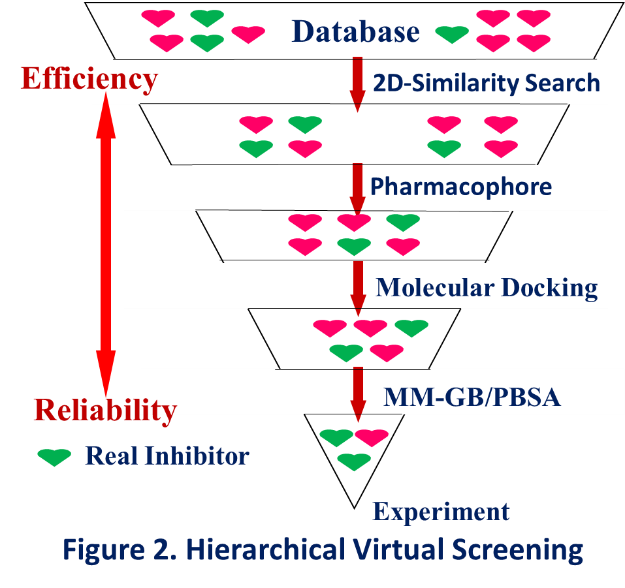Though high-throughput screening (HTS) is routinely performed in pharmaceutical companies to identify drug leads, virtual screening (VS), a complementary approach to HTS is indispensable in modern drug discovery owing to its unique advantages over HTS, such as its negligible operating cost compared to a HTS experiment. The low operating cost of VS enables us to explore a much larger chemical space of pharmaceutical molecules for a target. Moreover, VS in most cases produces target-relevant hits. In contrast, HTS may produce many hits due to nonspecific bindings. The mission of this core facility is to provide virtual screening service to the researchers who want to develop small molecules to inhibit their protein or nucleic acid targets. Virtual screening will be performed using a hierarchical virtual screening strategy for the ZINC database, a famous database of commercially-available compounds for virtual screening. The possible VS filters include molecular docking, binding free energy calculated with MM/GBSA and MM/PBSA, pharmacophore models, 2D/3D QSAR models, substructure or 2D/3D fingerprints, etc. A good balance between accuracy and efficiency can be achieved by this hierarchical strategy since the cheap filters are applied at the earlier stages, and more advanced filters are applied only after the tree is pruned (See Figure 2). The exact filters for a specific VS study depend on the already known information on the target and inhibitors. As ADME-Tox (Absorption, Distribution, Metabolism, Excretion, and Toxicity) is a major reason that leads to attrition of drug candidates, the ADME-Tox and drug-likeness profiles of VS hits will be predicted. The promising hits with good ADME-Tox and drug-likeness profiles will be reported to the users for further testing.
